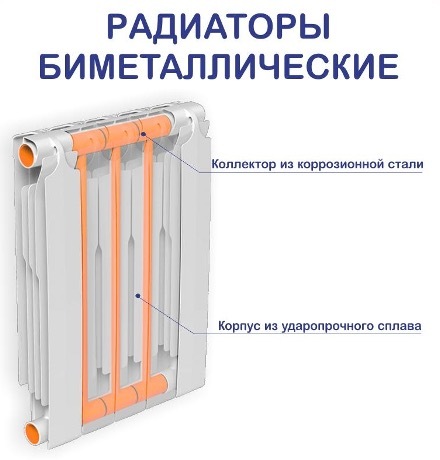At home, do-it-yourself plastering is done on lighthouses. This is the most efficient technology for obtaining a flat surface. To achieve maximum quality, you need not only to place the beacons correctly, but also to choose them correctly. How to do this is described below.
The content of the article
- How to choose beacon plaster
- What tools and materials will be needed
-
Step-by-step instruction
- Wall preparation
- Installation of beacons
- Mortar mixing and plastering
How to choose beacon plaster
When studying how to plaster walls on beacons with your own hands, it is first of all recommended to consider the rules for choosing a mixture and the beacons themselves. Today, manufacturers offer these types of plaster:
- lime - affordable, retains integrity for many years, but only in conditions of moderate humidity.
- Cement - durable, withstands almost any temperature and even high levels of humidity. However, it costs more.
- Gypsum - environmentally friendly composition, suitable for residential premises with moderate humidity.
Before you figure out how to align walls with beacons, you need to familiarize yourself with the types of beacons. There are 3 main options - metal, plastic and steel. Each type has its own characteristics, pros and cons. So, metal beacons have the following advantages:
- easy to use;
- affordable;
- you can choose any size;
- if necessary, you can accurately adjust the height by cutting off the excess parts with metal scissors - this will help in how to align the walls with the lighthouses.
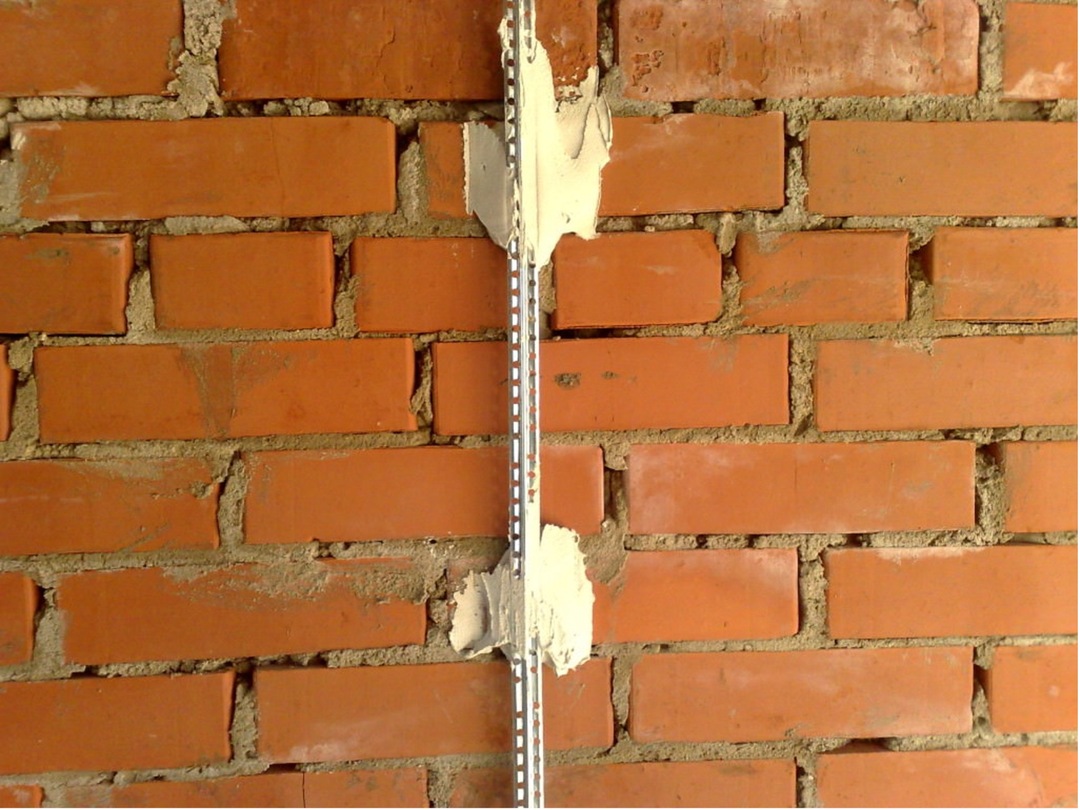
As for the cons, first of all you need to pay attention to such points:
- often on sale come across curved products;
- in the process of metal oxidation after laying a wet mixture, traces of rust may appear on the wall;
- usually products are made of aluminum, which is highly deformed, so you first need to fill the base.
Considering how to align the walls with beacons, you can also consider plastic models that have the following advantages:
- easy to use and transport (light weight);
- do not bend, keep their shape well;
- a significant plus - they are not subject to corrosion.
But if you plan to align with plastic beacons, you need to pay attention to the disadvantages:
- they can only be used for indoor work;
- they can not withstand heavy loads and can break;
- if it is incorrectly set and walked by the rule, the base may be deformed.
Steel beacons are deprived of all the described shortcomings - their advantages are obvious:
- durable;
- do not deform, because they bend enough;
- not subject to corrosion;
- can be used multiple times.
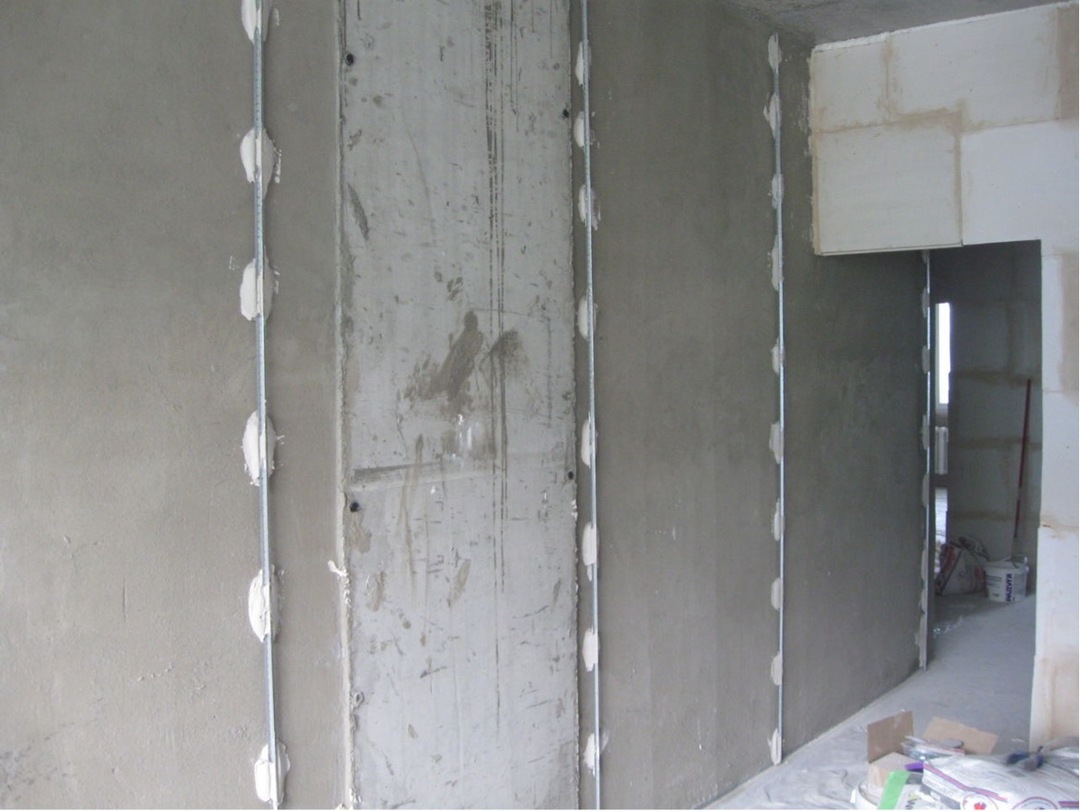
However, plastering on beacons of this type will cost more, and besides, you must follow the instructions clearly so that the surface is perfectly flat. If you plan to carry out high-quality repairs, and the experience of finishing work is small, it is worth choosing steel beacons.
What tools and materials will be needed
It is clear what beacons are for leveling walls. In fact, they perform a guiding function, showing where the upper boundary of the mixture layer passes. Thanks to this, the alignment process is much easier, and the result is really high quality. To do the work yourself, you need to stock up not only with plaster and beacons, but also with such tools and materials:
- drill with a nozzle or puncher;
- fastener - a set of self-tapping screws, dowels;
- level or plumb;
- hammer;
- grinder or scissors for metal;
- roller;
- bucket for mixing;
- a set of spatulas (including a wide one);
- shaped screwdriver;
- roulette;
- acrylic primer;
- rule.
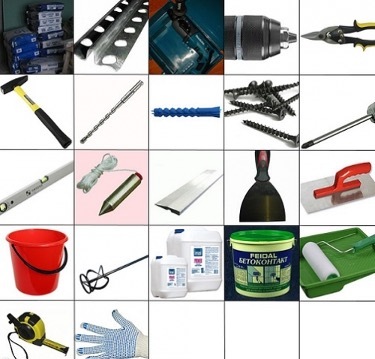
Aligning the walls with beacons is not difficult, but the main thing is to follow the technology of their installation, as well as mixing the mortar. The mixture is used only fresh, it is prepared in such a volume that can be spent at a time.
At the same time, they are guided by such an approximate consumption: in order to put a layer of 5 cm on an area of 20 m2, about a cubic meter of plaster is needed. Be sure to work with gloves, you can use a respirator if the room is too dusty.
Step-by-step instruction
The plastering of the walls under the lighthouse is carried out in several stages. First, the surface is prepared, then the beacons are set up, after which they begin to knead the solution and the masonry itself.
Wall preparation
Leveling the walls with plaster on the lighthouses begins with surface preparation. The work is done like this:
- Carefully inspect the wall in good light and determine the irregularities by applying a level. All places with defects are marked with a construction marker.
- Determine the way how to install beacons to align the walls. The elements along the edges are placed so that a distance of about 30-40 cm remains to the corner or slope.
- The rest of the beacons are placed at intervals of 160 cm, if the length of the rule is 200 cm. The last part of the surface, which is less than 160 cm, is divided into equal sections, for example, 80-90 cm each. Draw the corresponding horizontal lines as shown in the diagram.
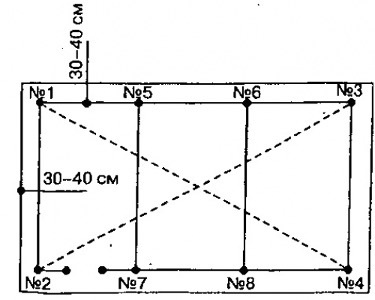
- Now you need to outline the horizontal lines. 15 cm recede from the floor surface and draw the first straight line. Where it crosses the vertical, holes are made with a drill and dowels are hammered into which self-tapping screws are screwed.
- Retreat 30 cm from the ceiling and make similar holes at the intersection with the verticals, insert dowels with self-tapping screws.
- Dust the surface and treat with a primer. Insert self-tapping screws into the holes at the bottom and top. At the same time, you need to screw them so that the hats stand up clearly vertically.
- Now you should take the rope and run it diagonally right along the heads of the self-tapping screws. Assess how the beacon profile rises - it should fill the space freely. If necessary, align the heads of the self-tapping screws.
Installation of beacons
There are 2 main ways to place beacons when leveling walls. They can be placed on the solution itself or fixed on fasteners. In the first case, a small volume of the mixture is prepared and a little gypsum is added to it to speed up the setting. The solution is thrown onto the wall in such an amount that it exceeds the height of the lighthouse profile. Next, the beacon itself is applied and pressed into the thickness of the plaster. The surface is leveled using a rule.
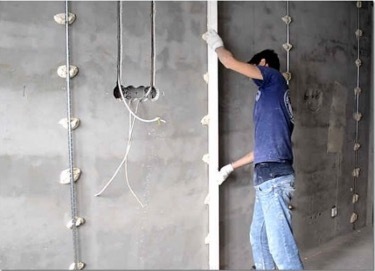
The second method is used in cases where the levels are already set. It remains only to make holes in them with an interval of about 30 cm. Dowel-nails are inserted into them and hats are screwed in so that they are strictly on the same level. Then fasteners are installed under each beacon and after that the profiles are completely fixed. Plaster is applied, adjusting the thickness with self-tapping screws on which the beacons stand (to reduce them, they are screwed in, to increase, they are unscrewed).
Mortar mixing and plastering
Now the main stage begins - plastering the walls along the lighthouses with your own hands. The solution is prepared strictly according to the instructions, first water is poured and then the dry mixture is gradually poured. Knead with a mixer attachment. If the composition is gypsum, they work in two stages, letting the solution rest for just a few minutes.
The process of plastering goes like this:
- Gather the composition on the blade of a wide spatula.
- With the help of a bucket, they are placed in the space between the beacons.
- Excess parts of the solution are removed using the rule.
- Wait 3-4 hours for the surface to harden a little.
- At this point, all beacons should be removed. But if it is planned to use tiles for decoration, the profiles can not be dismantled.
After that, corners and slopes are formed using an angular spatula. At the last stage, they make the final alignment and proceed to painting, wallpapering or laying tiles. If the beacons need to be removed, the space is immediately filled with the remnants of the mixture and leveled with the rule, and then overwritten.


